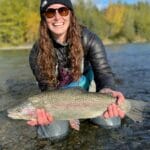Southeast Alaska tribes have long cared for their lands. Now they’re at work restoring them.
At nearly 17 million acres, Southeast Alaska’s Tongass National Forest is part of the world’s largest remaining intact temperate rain forest and produces around 30 percent of annual salmon catch in the western United States. The Tongass is home to towering spruce and cedar trees, deep fjords, tidewater glaciers, soggy muskegs, and more than 12,000 miles of anadromous streams, but the forest has deep scars.
Today, these scars are being repaired by Southeast Alaska communities and conservation partners, who are working together to develop a local workforce to support and advance restoration work across the forest.
Decades of industrial, clear-cut logging of old-growth trees has removed some of the most high-value salmon habitat in the forest, and road building has damaged streamside areas on Tongass salmon streams. The U.S. Forest Service reports 182 problematic road-stream crossings that currently block 64 stream miles of anadromous fish habitat. Many of these areas were logged down the water line, which removed riparian vegetation crucial for healthy fish populations.
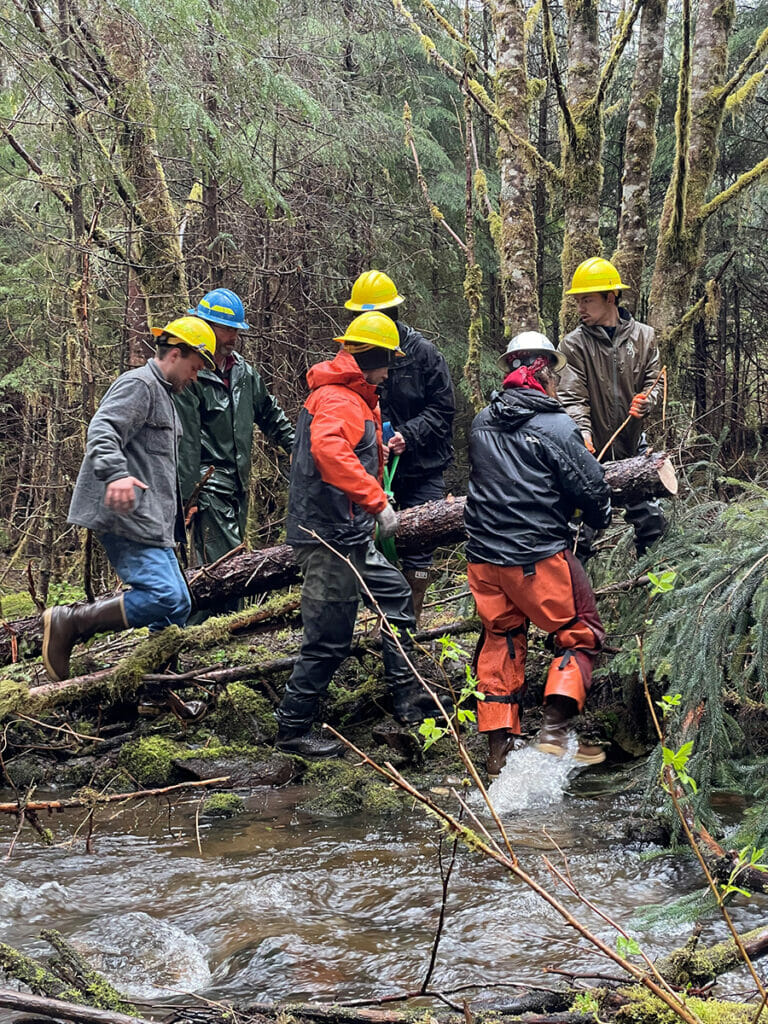
In 2021, the Forest Service announced it was ending its practice of subsidizing clear cuts of old growth and instead investing in restoration, recreation, and climate resiliency. These investments are creating new employment opportunities in Southeast Alaska, especially for those who have been caring for these lands for millennia. The Tongass has long been home to and stewarded by the Tlingit, Haida, and Tsimshian Tribes. Wild salmon have fed the Indigenous peoples of Southeast Alaska for more than 9,000 years.
Earlier this summer, the Southeast Alaska Watershed Coalition (SAWC), Forest Service and Ketchikan Indian Community partnered to host a restoration workforce development training, which instructed members from several tribal communities in the skills necessary to get jobs on restoration projects. The U.S. Fish and Wildlife Service provided additional support for the training. The on-site event in Ketchikan featured instructors from the hosting organizations who trained participants from the Metlakatla Indian Community, Ketchikan Indian Community, Klawock Cooperative Association, Prince of Wales Tribal Conservation District, Shaan Seet Inc., and the Klawock Indigenous Stewards Partnership.
Over the course of three days, participants learned on the job how to do restoration work using hand tools while restoring a tributary of Ward Creek, which is home to several salmon species, cutthroat trout and Dolly Varden. The area had been clear-cut to the water line in 1987, and the effects on fish habitat are still seen to this day.
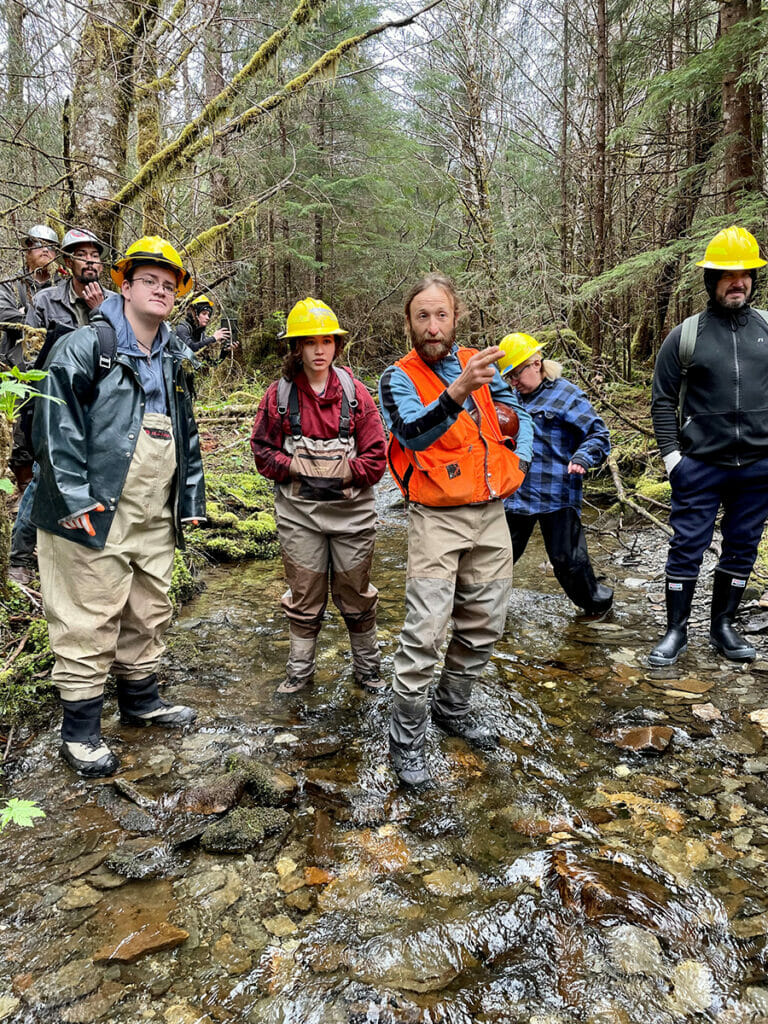
Much of the restoration work on the Tongass involves installing wood in the streams to simulate natural features found in healthy streams. Working together, participants and instructors built new log jams in the creek, reinforced stream banks, and added vegetation to the floodplain to keep the water flowing through the main channel.
“When you’re done with it you feel proud about it because you did something really cool,” said Quinn Aboudara, natural resource coordinator with Shaan Seet Inc. and crew leader of the Klawock Indigenous Stewards Partnership. Quinn participated in the workshop as both a mentor and participant. He has worked extensively on Prince of Wales Island and will take knowledge learned at the workshop back to island to help advance future restoration work there.
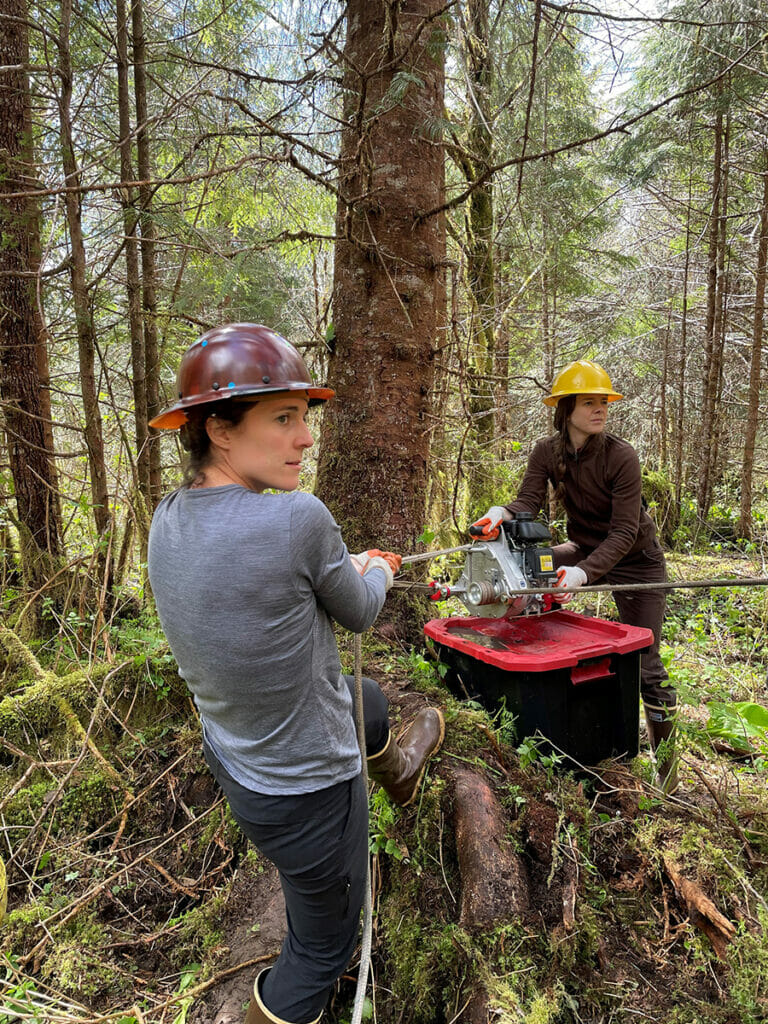
Cody Ellison is a forestry apprentice with Shaan Seet Inc., but is much newer to restoration work. Cody previously worked as a logger. He came across this opportunity and was eager to use the skills he learned in logging to help improve fish and wildlife habitat.
Cody said he is glad restoration work has provided him with good employment right at home on Prince of Wales Island. After the workshop, he planned to travel back home to work on stream surveys, restoration projects, and thinning second growth forests for wildlife habitat improvements. As an avid angler and hunter, Cody is appreciative of the “real purpose” this newfound work has given him.
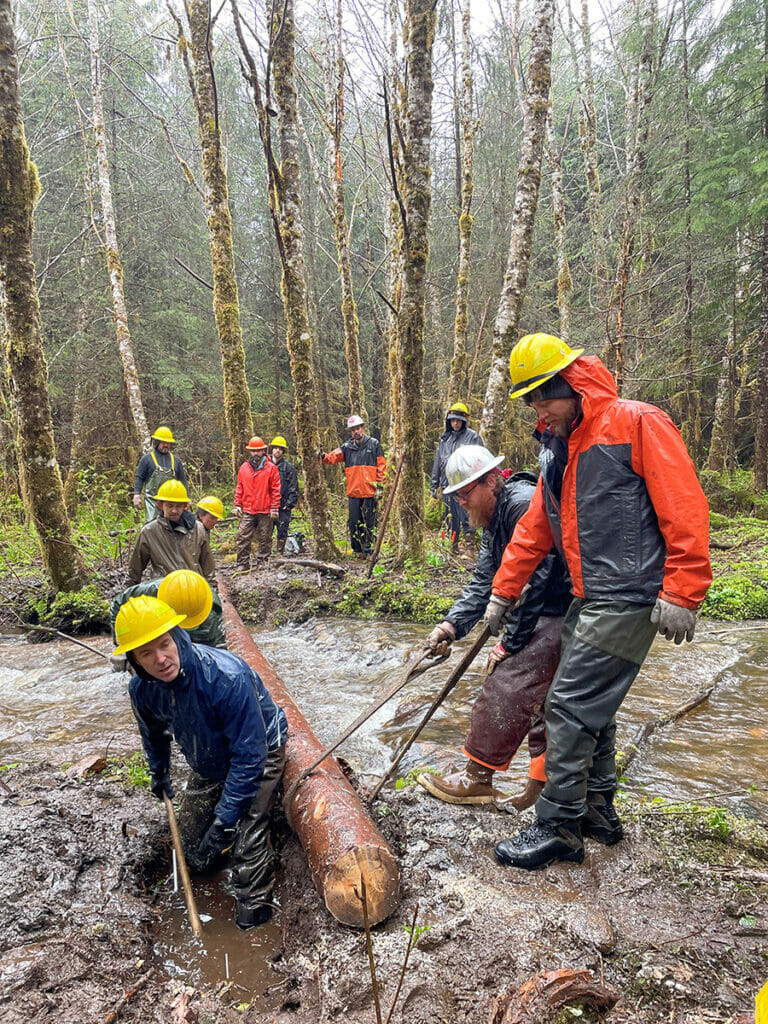
Prince of Wales Island is just one of the many places that will benefit from the workforce trained during the workshop.
Amy Hayward of the Ketchikan Indian Community was headed to work on the Margaret Creek restoration project after the workshop wrapped up. “I’ll be walking away with a lot of knowledge that I didn’t have before this opportunity,” she said. She is also new to restoration work and the training is providing new employment opportunities close to home.
The Margaret Creek project is a priority project for the Forest Service and SAWC, located on Revillagigedo Island approximately 22 miles northwest of Ketchikan. The project will restore around 2 miles of salmon habitat for sockeye and coho salmon. The Ketchikan Indian Community work crew will spend two weeks at the remote site adding large wood with hand tools, while a local contractor will use heavy equipment to restore larger mainstem sites.
The future of the Tongass is looking bright. The growth of restoration work is bringing vast ecological and economic benefits to communities throughout the forest. Each restoration project is an opportunity to employ local people and bolster the fish and wildlife populations that southeast Alaskans so heavily depend on.


